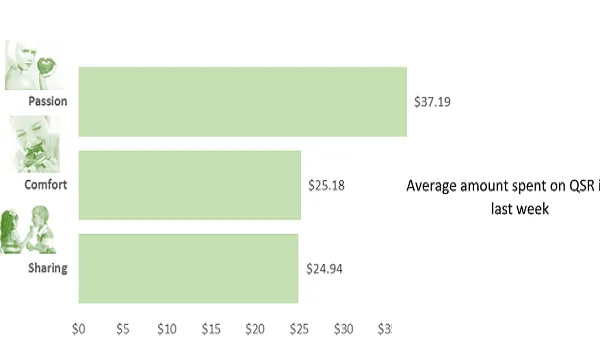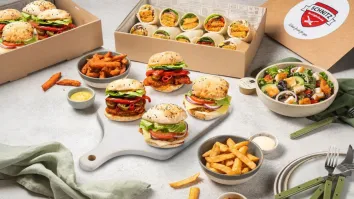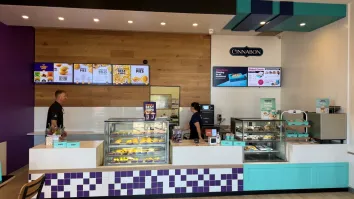
Comfort, Sharing and Passion: Emotional Motivations that Drive Consumer's Choices
emma data from Ipsos shows which emotions motivate consumer choice.
When QSRs advertise their latest menu items and promotions they often incorporate an emotional motivation in the communication. By doing so, in addition to building on their brand image, they are tapping into what is important to different consumers when choosing a QSR. emma data allows us to examine three consumer groups; those who agree food is about comfort; that food is about sharing; or that food is one of their passions in life. They all agree with one statement and disagree with the other two, granting us access to those who are influenced very strongly by one of the particular emotional motivations.
Spending an average of $37.19 in the last week on QSRs, people who say that food is their passion have spent 48-49% more than those who agree food is about sharing or comfort. They are also 25% more likely to use coupons. This could imply that they are not necessarily just spending more on meals, but perhaps actively keeping an eye out for deals at their favourite restaurants. Interestingly, baby boomers (who make up 28% of the Australian 14+ population) are 46% more likely to agree that food is one of their passions, accounting for 41% of the passion group. Online, the passion group are 29% more likely to have been making travel arrangements in the last 7 days.
For those who agree that food is about comfort they are 39% more likely than the total population to be Gen Z. They are 22% less likely to listen to the radio in their car and are 21% more likely to be on the Instagram app, which could lead us to believe they prefer much more visual mediums. When they are online, they are 25% more likely to be contributing to a chat room or online discussion forum. Gen Z over index in all categories surveyed by emma data in relation to word of mouth behaviours about food and dining.
Our food sharers are 40% more likely to be Pre Boomers than the total population. Despite them only making up 12% of the 14+ population, they account for 17% of the sharers. In contrary to the connotations of the word sharing with being the most generous they spend the least out of the groups, at $24.94 in the last week. We can assume that the Pre-Boomers (born before 1946) are cautious with their money and more likely to be thrifty and know how to stretch their dollar. 55% of sharers notice advertising on buses and taxis (6% more likely than the total population). They are far less likely to have any polarising online behaviours, under indexing in 74% of online activities surveyed in emma.
Emotional bonds with consumers help strengthen word of mouth advocacy by honing in on what is important to them. Tapping into happy memories and associations with the different generations is likely to be a success to any QSR.

Data from emma August 2016, n=2,841























